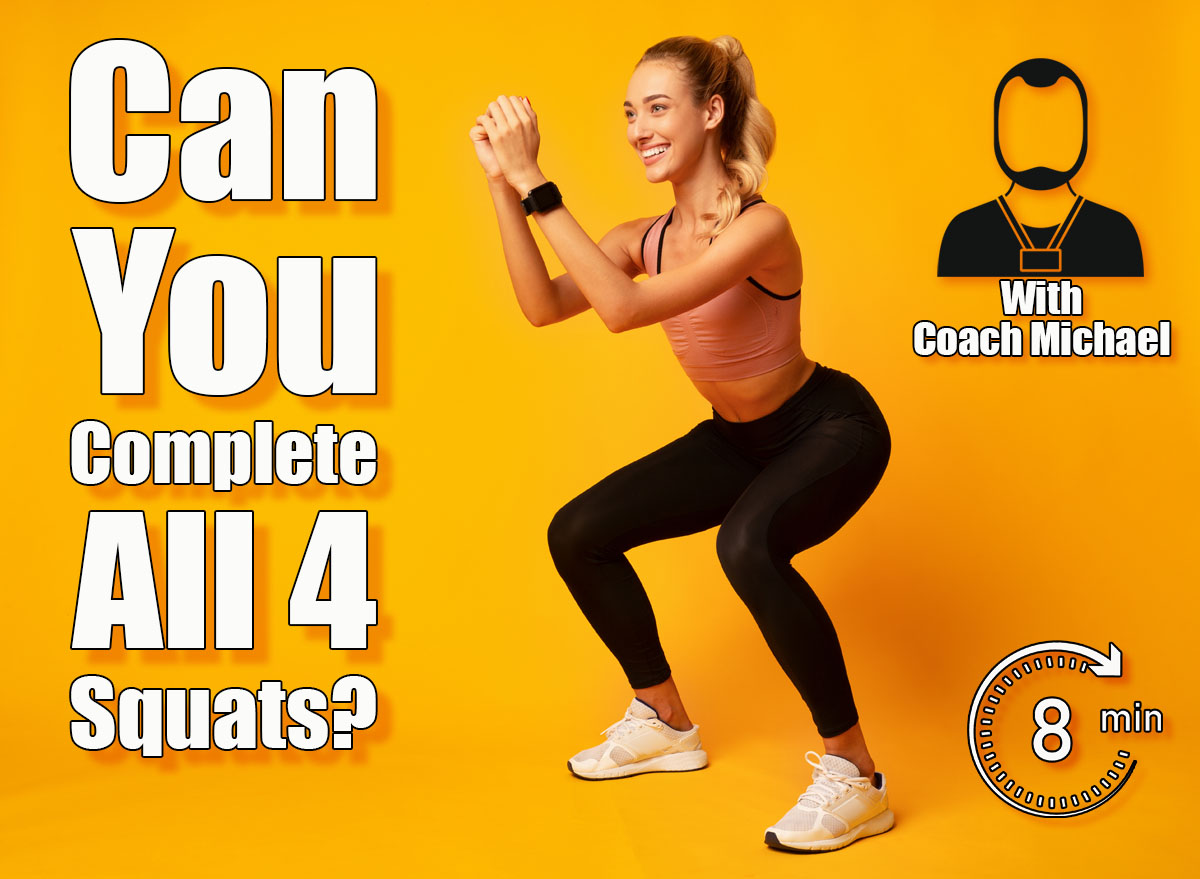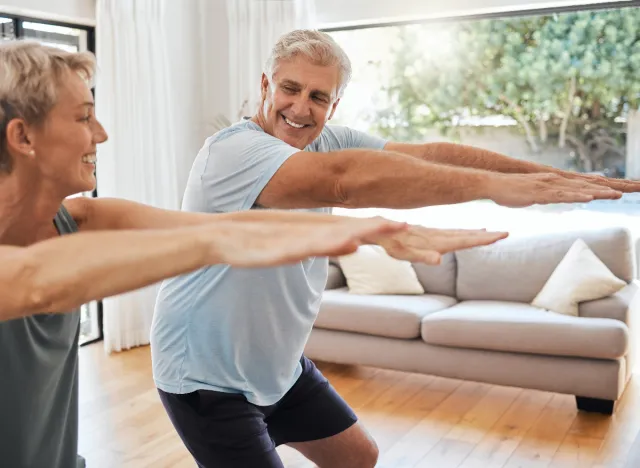If You Can Do These 4 Squat Variations, Your Lower Body Is Bulletproof

It’s been almost 40 years since I started working as a trainer and the number of clients I have who sit down all day for work (and then often at home in the evening) has grown exponentially—leading to what I call dead butt syndrome. The name often gets a smile, but the actual symptoms—glutes that don’t work properly, super tight hips and ankles that don’t have the mobility needed to operate normally—can lead to incredibly serious issues and long-term pain. Read on to discover the four squat variations that will reveal exactly where your weaknesses are and how to build a bulletproof lower body.
Why Sitting All Day Destroys Your Lower Body (and Why Squats Can Save It)

We live in a world where most people spend 8 hours or more a day sitting. How does this affect our lower body strength, and why are squats – especially these advanced variations – so crucial for our overall health?
When we have weak glutes, tight hips and poor ankle mobility, we don’t tend to notice immediately, the human body is fantastic at compensating – knees compensate for tight hips, your lower back takes over from your glutes and you keep going as normal – until all of a sudden you can’t and you’re dealing with a potentially debilitating injury.
Squats are one of my absolute favourite exercises for fixing and preventing issues as they force the entire lower body to work together as a team, waking up sleepy glutes, stretching your hip flexors and teaching your brain to coordinate during complex movements. The only problem is that a basic squat can only show you so much, luckily there are a huge number of variations. The four below cover all potential weaknesses and give you a bulletproof lower body.
4 Squat Variations That Bulletproof Your Lower Body
Single-Leg Squat (Pistol Squat)
How to do it:
- Stand on one leg
- Extend the other leg straight out in front of you
- Squat down until your hip crease goes below your knee
- Drive back up without touching your raised leg down or using your arms for balance
What it reveals:
If it’s not possible for you to do this, you either have significant strength imbalances between your legs, poor single leg stability or your ankle mobility is limited. The majority of people tend to discover the leg they considered their strong leg is actually much weaker than they thought. This movement also reveals issues with core stability. If you tip your torso forward or lose your balance then your deep stabilizers aren’t doing their job.
Overhead Squat
How to do it:
- Hold a weight (or just your arms) directly overhead with arms locked straight
- Squat down as deep as possible while keeping the weight over your mid-foot and your arms vertical throughout the entire movement
What it reveals:
If you can’t do this, you’re dealing with thoracic spine immobility, shoulder inflexibility, or ankle stiffness. Your arms will drift forward, your chest will collapse, or you’ll barely be able to squat halfway down. This movement shows how sitting all day affects your entire kinetic chain – from your ankles all the way up to your shoulders.
Jump Squat
How to do it:
- Squat down and explode up as high as possible
- Land softly back in the squat position
- The key is generating maximum power while maintaining perfect control on the landing
What it reveals:
If you can’t do this properly, you lack power output in your lower body. You might be strong in slow movements but your muscles can’t generate force quickly. Poor landing mechanics also indicate weak glutes and inadequate knee control – both major injury risk factors.
Deep Pause Squat (5-Second Hold): Your Ultimate Stability Challenge
How to do it:
- Squat down as deep as possible
- Hold the bottom position for 5 full seconds without shifting weight or losing position
- Drive back up smoothly
What it reveals:
If you can’t do this, you have serious mobility restrictions in your hips and ankles, or your stabilizing muscles fatigue too quickly. Most people start shaking within 2-3 seconds or can’t get into a deep squat position at all. This exposes both flexibility and strength endurance issues.
What to Do if You Can Only Complete 2-3 of These Variations

Start with the basics and work systematically on what’s holding you back. If you fail the single-leg squat, spend time doing assisted versions using a suspension trainer or holding onto something for balance. Gradually reduce the assistance until you can do it unassisted.
For the overhead squat, work on thoracic spine mobility with foam rolling and stretching, improve ankle flexibility with calf stretches and ankle mobility drills. Practice the movement with your arms only before adding weight.
If you struggle with jump squats, build up your regular squat strength first, then work on small jumps before progressing to full explosive movements. Focus heavily on landing mechanics – that’s where most people get hurt.
For the pause squat, spend time in deep squat holds for shorter periods and gradually build up. Work on hip flexor stretches and ankle mobility simultaneously.
Don’t try to master all four at once. Pick your worst one and focus on that for 4-6 weeks before moving to the next.
What It Means if You Master All Four Variations

That you have bulletproof lower body function. Their injury risk for common problems like back pain, knee issues, and falls drops dramatically. You have the strength, mobility, stability, and power to handle whatever life throws at you.
More importantly, you’ve reversed most of the damage that sitting all day causes. Their glutes are firing properly, their hip flexors are flexible, their ankles move well, and their core provides solid stability. You can trust your body to perform when you need it to.
These people age differently. You maintain independence longer, stay active later in life, and recover faster from minor injuries. You don’t develop the movement compensations that lead to chronic pain and dysfunction.
But here’s the reality – less than 5% of adults can perform all four variations correctly. The good news? With consistent work, most people can get there within 6-12 months. Your body wants to move well – you just have to give it the right stimulus to remember how.